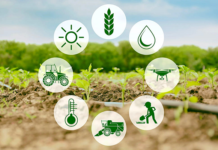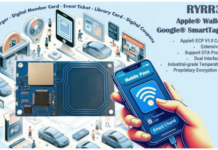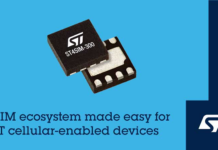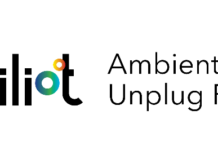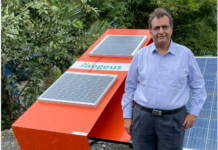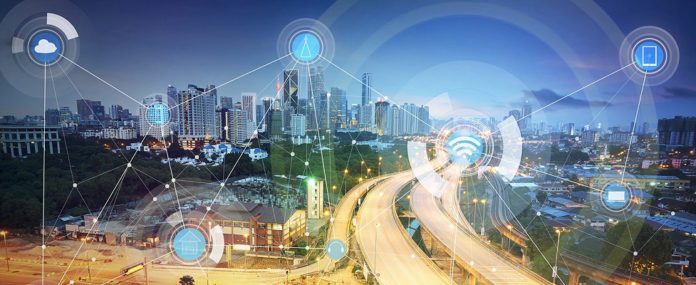
The Internet of Things (IoT) hyperbole has taken an unexpected twist – very similar to my all-time favourite conundrum, which is, “How many mystery writers does it take to change a lightbulb?” Well, the answer is two, of course. You see, you have one to screw the bulb almost in and the second to give a surprise twist at the end.
Breaking News: This IoT Thing Isn’t New!
Just like the surprise twist at the end, for me, the IoT has now taken a journey into the unknown – an uncertain path where I question its viability. The IoT has a natural and logical proposition as to what it should achieve and deliver. I understand how the industry wants to push forward and establish this young technology, but there is a founding supposition, which needs to be adhered to and not taken out of context.
I’m not sure how many readers know this, but the IoT, as a term, first appeared in the mid-1990s due to the furore over a very young “Internet”. It wasn’t until circa 1999 when a new supposition emerged that propagated the notion with an emphasis as to how objects or things could be tracked using radio-frequency identification (RFID). This supposition was quickly updated to reflect how these same or similar objects could be tracked within an IP-enabled structure.
What Is a Smart Object?
So, this is where we are, more or less, with one slight caveat, namely, the “smart object”. Objects or things that were being tracked using RFID or IP were not deemed as “smart”. You see, a smart object or thing is embedded with, for want of a better expression, a “small computer”.
The gubbins of a smart object would include a processor; memory for processing and storage and, of course, that all-important ability to connect to the internet and, as such, objects or things became smart!
If It Can Connect to the Internet Then It’s IoT, Right?
More often than not, the IoT is used synonymously to denote anything that has internet capability – you know, that globally interconnected network. Well, that assumption is historically incorrect, although there are two distinguishable differences between internet-connected devices and IoT things: purpose and scalability. And so, with this in mind, I’ll start to explain the strange twist that’s occurring to the IoT.
I do feel that the IoT has plateaued at a level where it has become synonymous with the internet. So, anything that can connect to the internet is placed conveniently under the IoT umbrella. For me, this has brought about quite a shift in my thinking, since my deep-seated thoughts always lay in viewing a smart object or “thing” as an embedded device. This is still largely true, but it is becoming widespread to consider that any device that’s connected to the internet is part of the IoT. And I see this shift in definition happening across the industry.
Defining Scalability and Responsibility
I do have some terms and conditions, however, as to what can be regarded as part of the IoT. As I previously mentioned, it’s about purpose and scalability. Let me explain … So, a good six or so years ago, I started researching the IoT for my new book (The Handbook of Personal Area Networking Technologies and Protocols, Cambridge University Press) and in it I conceived the “Smart Agent”. I began by describing how the internet exists today due to humans providing petabytes of data and how, nowadays, us humans no longer have the time or inclination to continue amassing this wealth of information.
So, a smart agent, just like a smart object or thing, is tasked with one or several roles – you see, it has a purpose. I suppose, we can compare an agent to a sensor of sorts where, for example, it has the responsibility to collate data about its environment – such as temperature, humidity and luminosity.
Yes, We Have a “Classic IoT”!
A more exhaustive example would include the industrial internet of things (IIoT) or industry 4.0, where sensors across manufacture and production would ensure the welfare of a product being assembled. A smart agent is a device that is tasked with one or more responsibilities that help harvest data about a particular subject and share that information with humans – in essence, it’s more than a smart object or thing – it possesses sufficient know-how to share such data and to do so in a human-readable or audible manner.
I would regard this, as the “classic IoT” – true to its founding supposition. And that pretty much firms my philosophy on how the IoT today, and for the future, should truly manifest itself. Nevertheless, there are some in the industry who have distorted the boundaries somewhat and, in my opinion, the boundary of where the IoT begins and ends is grossly blurred. It seems, to some, the IoT is not limited to devices, as such, but should now be extended to the “enterprise” and, for me, not only is this the surprise twist, but here it becomes confused and a little fuzzy. When a smart object, thing or agent reaches the ‘edge’ and offers its harvested data to the back-end enterprise, surely that becomes “big data” which, alas, is another hotly hyped term.
Until Next Time …
I do feel that the IoT is still very much in its infancy and once the hyperbole has settled we can begin to crisp our focus as to what it should provide. I still hear a lot of noise and, hopefully with the several standards bodies that have emerged over the last few years, we will begin to shape the IoT’s future and purpose.
One exciting sector, for me, is the IIoT and Industry 4.0, something that’s a serious consideration across Europe. To empower the assembly line, for example, with smart agents would ensure a better product and assured quality. I really believe what causes any technology to stagnate is the associated hype that accompanies the notion and, today, the IoT is attempting, with the help of the better-educated industry, to shake off the unnecessary bling. Can the real IoT please stand up? I think it can!
So, this is where the internet of things guardian, Dr. G, signs off.



